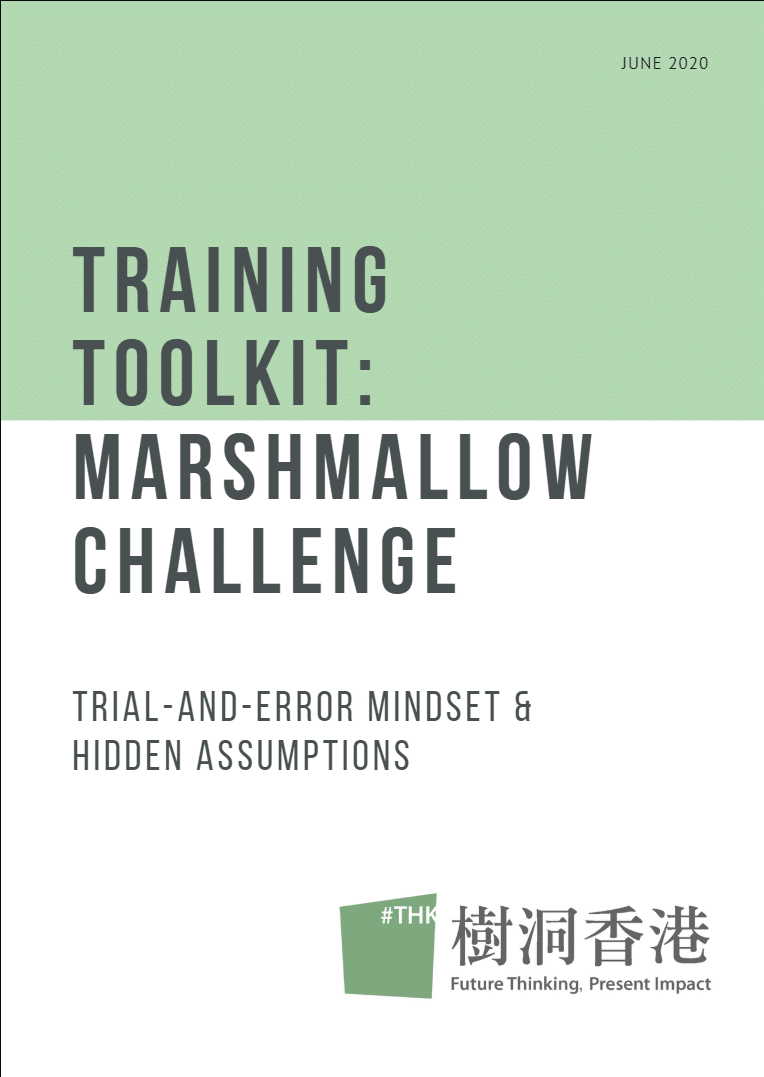
Get Training Toolkit: Marshmallow Challenge for free!
Looking for insightful team activity? Download our printable PDF guidebook and enjoy peace of mind. The guidebook comes with in-depth analysis of the training tool and ready-to-use debriefing questions that you can't find on the website. Training just couldn't have been easier!
Training Toolkit Summary

Marshmallow Challenge
The Marshmallow challenge is an activity aiming at introducing a new mindset of collaboration and problem-solving. With the task, the idea of hidden assumptions is introduced. We often unawarely make assumptions on unknown factors and these hidden assumptions are possibly flawed. They can be disastrous if we fail to test and validate them. The marshmallow challenge is a practical tool for reflecting and improving working style.
Marshmallow Challenge
Learning Objectives
- Strategies in innovative problem solving
- Hidden assumptions which exist in every project
Material
- Spaghetti
- Tape
- String
- Marshmallow
Time Required
- 40 Minutes
Steps
Step 1
Divide participants into groups of 3 to 6 people. Distribute the materials.
Step 2
Clearly explain the goal and the instructions of the challenge. Make sure they understand the instructions and the goal. Then, you can kick off the challenge by starting the countdown.
Step 3
During the game, you can let the teams know how much time is left in your own pace and preference. Calling out the performance of different teams to remind the team that it is a competition. In the later part of the challenge, perhaps the last 3 minutes, you can warn the teams that holders shall face disqualification.
Step 4
When the time is up, let everyone sit down and look at the towers built by other teams. Announce the winner.
Step 5
You can start the debriefing by asking some general questions e.g. asking teams to evaluate their performance and guess the underlying meaning of the challenge. Then you can explore the message on problem solving and hidden assumption with the suggested debriefing questions.
